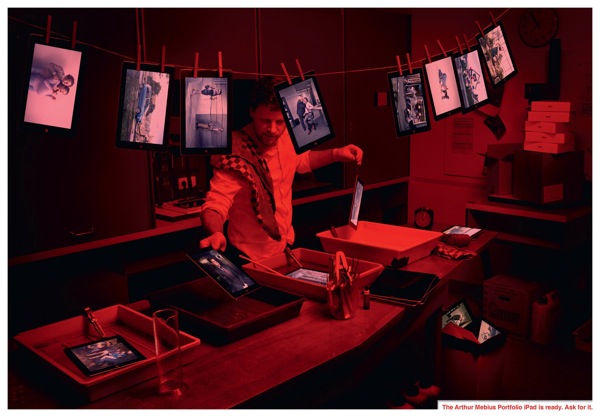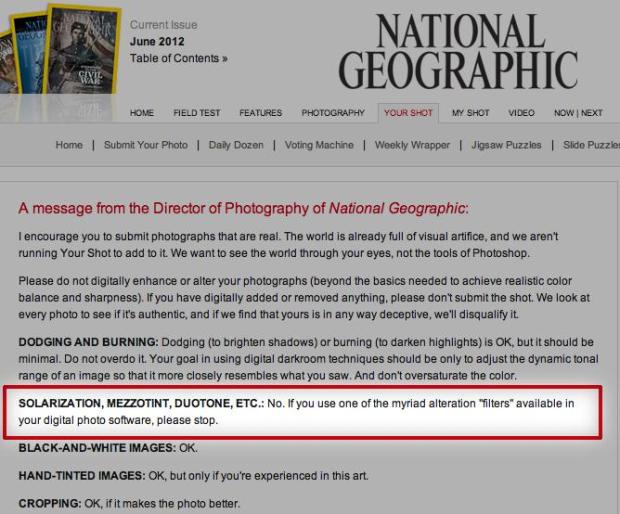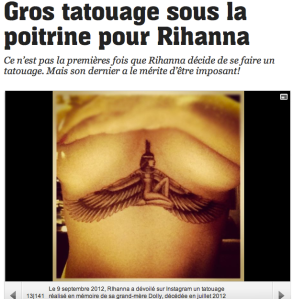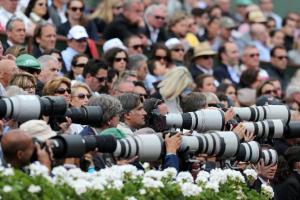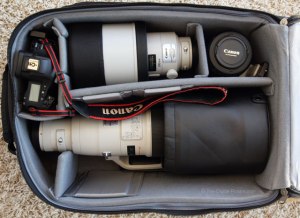Posts Tagged social networking
Can anybody be a journalist?
Posted by romainbardet in Uncategorized on November 27, 2012
Who can be called a journalist? The answer isn’t so easy, but so important in a world where everything goes so fast and information has a great impact on human activities.
Today, almost anybody in the world has a smartphone and an access to the web. Anybody can post a picture, a text or a video and give a sort of information to the world. How? With the new media: Blogs, Facebook, Twitter, Wikipedia or YouTube. Information is so easy and so quickly widespread trough the planet. “Great evolution”, will say the ones. “Disinformation” will respond the others.
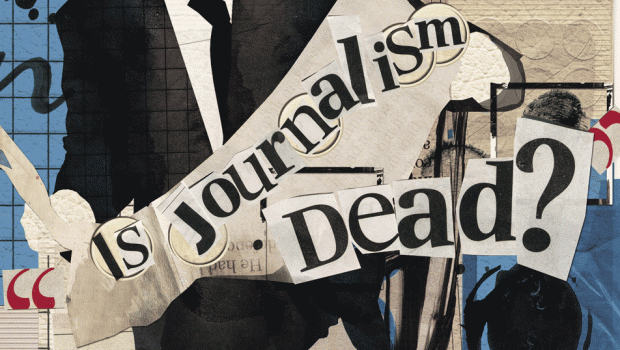
Will the professional journalists disappear?
Picture: macalester.edu
The raise of citizen journalism: the new world’s voice
People don’t want to stay silent. For many centuries, journalists have been people’s voices. They found, collected and verified the information and always searched for the truth. But with the Internet’s democratization, people don’t want to wait that the journalists let them speak. They prefer to raise their voice directly and explain or show something to the whole world.
With the advent of Internet 2.0, new media technologies, for example social networking and media-sharing websites, gave citizens the opportunity to give information. Those citizen journalists often report breaking news faster than “normal” journalists. We can cite the events of Arab Spring, which were a lot report by anonymous citizens in the heart of the revolution. Another example of this quick report and exchange of information is the “Occupy Wall Street” movement which debuted on September 17th 2011.

Syrian activists send information with their computer.
Picture: bbc.co.uk
A really actual example is Syrian crisis. The country is closed and inhospitable for the journalists. But Syrian people who live the war post videos and testimonies on YouTube, social media or blogs. They claim their story and give a reality that many journalists just can’t report. It benefits to the citizens in the world, to realize what’s happening there!
Chris Shaw, the editorial director of ITN, a Britannic production society, said to The Guardian that social networks were opening up “whole new vistas for documentary filmmakers. You can make the most amazing films using content from social networks, sometimes with the permission and sometimes without the permission of the people who shot them.”
This reality takes all its sense with the Syrian crisis. “There are places like Syria where journalists haven’t been able to go and […] there is an extraordinary resource on social networks for current affairs, even though we have to take extraordinary caution to verify what we use”, said Chris Shaw.
Let’s see a short funny video, but with interesting points of reflection. “No no, I’m the journalist!”:
Let people participate
What we can observe today, is that many classical media websites give people the possibility to react and deepen the information. You can let comments in the website’s blog for example. Professional journalists are not alone anymore, because readers give a feedback and let them know what they think about the article and more globally about the topic.
Other media are based on the concept that citizens can contribute to the news by giving information or sharing links, but with the control and the work of professional journalists behind. This is the case of Digital Journal or Rue89 in France for example. But is it citizen journalism? I don’t think so. We can call this hybrid journalism, because citizens and professional journalists work together.
 But some websites or blogs are entirely “citizen made”. You, I, anybody can add an article and participate to information’s transmission. But these platforms ask the contributors to share valuable and verified information, and grant themselves the right to remove an inappropriate content. For example, we can mention the Quebec’s website centpapiers or the better known Wikinews.
But some websites or blogs are entirely “citizen made”. You, I, anybody can add an article and participate to information’s transmission. But these platforms ask the contributors to share valuable and verified information, and grant themselves the right to remove an inappropriate content. For example, we can mention the Quebec’s website centpapiers or the better known Wikinews.
American information’s channel CNN launched in 2008 its new participative site: CNN iReport. This website is only based on citizens content. They can post a story, picture, commentary or video and create the news. What is interesting with this concept is that CNN’s journalists sometimes select a subject and diffuse it on the classic channels. With this system, citizens can really be a part of the media agenda setting.
Citizens, yes! Citizen journalists, no!
So where is the difference between a citizen and a professional journalist? Well, let’s go back to the very base of journalism: giving information. Information isn’t just a concept; it’s the reality, the truth, what’s really happening. Yes, journalism is “making information” and transmitting this information to the people; a full-time job!
Here are some answer people gave to the question “Who should be called a journalist?” on ijnet (international journalist’s network):

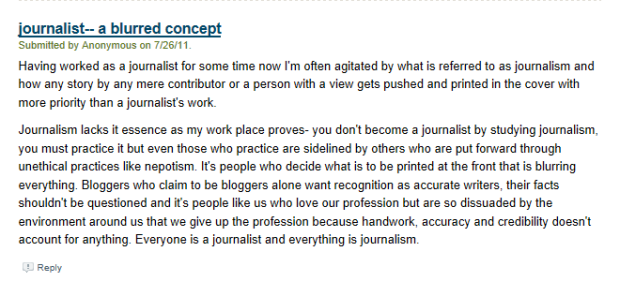

If we set aside the fact that professional journalists work for a media and are paid for this, we must consider that journalists respond to some exigencies and rules. They have to verify the sources, analyze them, explain the events, replace them in their context and be as objective as possible. And the journalists must respect deontological rules. Do the citizen journalists respect those exigencies? Because they must, instead we just can’t call them journalists.
Another point is that a professional journalist isn’t in the commentary when he writes an article. When a citizen journalist writes, we often observe committed comments. Professional journalist informs, when online citizen testifies to what he sees, ears or notices.
But today, citizens contribution is a wealth for journalists. An inexhaustible source of ideas and materials than can be used. And it forces journalists to do their job: treat information and not only transmit it as it is. Citizens make their citizen’s job, when they transmit something important and newsworthy to the journalists.
You’re a citizen, a journalist, or maybe a citizen journalist: what do you think? Leave you comments!
Instagram: a teen-toy or the new reporter tool?
Posted by leagloor in Technology on November 26, 2012
“Instagram photos cheat the viewer!” Nick Stern’s claim, published in February 2012 on cnn.com, came as a bombshell, engendering pros and cons-reactions in the journalism and photo-reporting world. Who’s right? Let’s have a look!
With more than 30 millions of users and about 150 photographs posted (see article on Wikipedia), the photo-editing and social-networking app Instagram can be described as one of the most successful Smartphone tools. Among its users; teenagers, adults, singers, actors, politicians and, of course, journalists!
Yet the journalistic use of Instagram in a professional perspective has created a huge debate on the web since last February. The vexed question: can journalists and photojournalists honestly use Instagram as a professional tool, to cover a war or a political meeting, or has it to remain a “toy” only good to post pictures of your breakfast or your new nail-art?
 |
Cheating with reality?
For some photographers no hesitation, Instagram has nothing to do with information and journalism. Here are some of their main arguments. But before, here you go with a video that shows you how Instagram works and what are its main features:
Filters and fake emotions
Photographs bring emotion, related to the subject, to the viewer’s history but also thanks to the way the picture is taken. Regarding this, the anti-Instagramers are clear: Instagram kills the authenticity, creativity and originality of your pictures.
For Nick Stern (see the complete article here and his website here), American news photographer and first anti-Instagram pamphleteer, the pictures taken with the app do not communicate real emotions, conveyed by the photographer, as it should. “It’s the work of an app designer in Palo Alto who decided that a nice shallow focus and dark faded border would bring out the best in the image”, he claims, “The image never existed in any other place than the eye of the app developer”.
“The greatest photographs are created in the mind of the photographer and not in the workings of the camera.” Nick Stern
Moreover, with 14 different filters, the variety of pictures is indeed quite large however rather limited. According to its accusers, Instagram creates therefore photographic standards, which enchain the users, kill their creativity and prevent them from expressing their emotions.
But was it not already the case with silver films? Indeed, during the development process, the photographer could use different chemical techniques such as cross-processing and could therefore add something external to the picture.
Aesthetics against information duty
Showing reality objectively is one of the main goals of any journalists. For the anti-Instagramers, using an app that adds effects on a picture in order to make it look fancier or nicer does not fit the profession ethics. That is why Nick Stern says that “Every time a news organization uses a Hipstamatic or Instagram-style picture in a news report, they are cheating us all”.
However aesthetics is a part of photography anyway such as subjectivity. Photographers are dealing with image and cannot completely distance themselves from the visual dimension of their job.
As Joerg Colberg, an American photographer says “We all know that all photography is fiction: as a photographer you make choices, which influence the photograph enough for it to be more of a fiction than a fact. […] But the photojournalist’s task, no actually the photojournalist’s duty is to minimize the amount of fiction that enters her/his photography. […] The problem with InstaHip in this particular context is it adds a huge amount of fiction to photography, simply by its aesthetic” (see the complete article here).
News Trivialisation
Another problem raised by the accusers is that the majority of the Instagram pictures deal with the users’ every day life: meals, hobbies, fashion, cosmetics, friends, family and pets. Mixing serious news pictures with these trivial subjects minimizes their value and their informational impact.
“Since in the dominant context, people’s social lives, InstaHip photographs are usually not seen as particularly relevant, once you use InstaHip as a photojournalist you’re applying that same kind of thinking to your images. You’re trivializing your message.” Joerg Colberg
Why so unserious?
Maybe the solution would be to create a parallel network, which would share the same technical features and would be exclusively destined to news companies, a kind of Infostagram! But we will come back to that later.
The Like button tyranny
As other social networks, Instagram allows the users to share their pictures on other social medias such as Facebook and Twitter and proposes a comment option and a Like button.
American panelists wondered to which extent “Instagram’s Like button, combined with the image filters, has turned the service into performance art, with people trying to rack up Likes for the most aesthetically striking images” explains Steve Myers in his article on Instagram (see the complete article here). A sort of photographic social desirability!
As we will see later, these social network features can also be positive for journalists. In the mean time, to read more about the Like-culture problematic, click here.
Vintage overdose
You can see it in fashion: vintage is trendy! And photography is no exception to the rule. Instagram, with its Instamatic and Polaroid-inspired effect perfectly incarnates this trend (see this article here). But as Jean Cocteau said “Fashion is what goes out of fashion.” Thus, the risk that Instagram becomes outmoded is real.
What risk for journalism then? Since Instagram becomes has-been, the information broadcasted on it will not be seen as relevant by its users or its ex-users. The value of information will be at stake.
Moreover, is not information supposed to be related to the here and now, to the burning issues and not focused on the past?
 Instamatic Kodak 100, 1963 |
 Polaroid One Step, ’80 |
Connecting people?
Does Instagram look like the Devil to you now? Fortunately some positive and helpful aspects can also be highlighted, all related to the social dimension of the app.
Information network
As already said, Instagram is not only a photo-editing app, it also allows the user to create an extended network, to follow people and to get followers. Videos on Youtube actually show you how to be followed by the maximum of users. Do you remember what we have said about the Like button tyranny?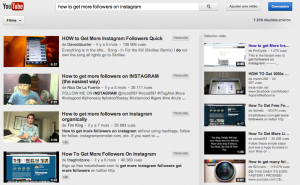
More seriously Instagram can become a real information feed, through the channels of news companies or through the topics dealt with on the official blog of the app (see here). However, at the moment, the media channels remain extremely poor and unfed. The only one which seems active is the CNN’s, perhaps because of its US origin and destination. Here are some examples taken from Webstagram, the Internet viewer of the app.
One of the rare successful examples of use is the covering of the New York Fashion Week 2012 by the New York Times. The journalists present on the site provided 450 pictures through the account created for this occasion, visible here. With 156’319 followers, the operation was a real success.
 |
 |
Another example: the National Geographic launched a blog fed with climbers’ Instagram pictures called “Field test – On Everest”. The Instagram feed of the magazine, visible here, is also well provided with pictures.
However the company seems less tolerant regarding the pictures sent by its readers. In a message on the company website, the photography director encouraged the National Geogrpahic readers to avoid sending them modified pictures:
This desire of authenticity and objectivity matches the cons arguments presented previously regarding Instagram.
The non-professional Keystone
If the National Geographic had a really ethical reaction regarding photography, this is not the case for some other medias. Indeed Instagram can be used as a kind of a non-professional Keystone.
Let’s think about several showbiz articles written by the 20minutes about Rihanna’s tattoo or Kim Kardashian’s look. The information comes directly from what the celebrities post on Instagram as a primary source. Even if we are talking about famous people, this is what we call crowdsourcing or UGC (User Generated Content).
In a more serious perspective, a new app has been developed, called “Signal”, a mix between Instagram and Foursquare. With this app, you can post pictures and geolocalize them.
Normal citizens and journalists will thus be able to get informed of the events happening in their country or their area. What happened with Twitter during the Arab Spring could also happen thanks to photographs (see complete article here).
Democratisation of photography
One of the main arguments against Nick Stern’s article was that his vision of photography was elitist. Let’s think about Mathew Ingram’s article (available here) who vividly criticizes this vision.
Likewise, the photographer and photography teacher Richard Koci Hernandez praises the new possibilities of interacting with the audience offered by Instagram: “More people are now being exposed to my journalism than ever before […] Now I have access to literally the entire world.” (see complete article here).
Thus, for Instagram-defenders, using this app is also a way to have access to a form of art production, which was by now saved for professionals and artists. But can we honestly put on the same level the technique required by an SLR camera manipulation and the use of a mobile phone?
A matter of perspective
As we have seen, no categorical answer to the Instagram problematic can be given. Asking what a relevant photograph or a worthy photographer should be requires also to ask what photography is. A hobby? A job? An art? The three of them? Maybe the answer lies in the context or the personal perspective in which the picture is taken.
Let’s think about Benjamin Lowy’s work in Afghanistan. He used Instagram but did not betray what the journalist Alex Garcia calls “the vision and mission of photojournalism – [he is] applying a creative aesthetic that adds meaning or accessibility to [his] images” (see complete article here).
Anyway we should not forget that, Instagram or not, photography is always a matter of choice. By then, watch the birdie!
By Lea Gloor
Famous people and social media
Nowadays, social media have become a “must have”. A “must have” for us, simple citizen of the world, to be part of the worldwide communication process. But, for those we call celebrities, social networking is a powerful tool. Indeed, using social media, famous people reach directly the public. A strategy directed to involve their fans in their daily life and by the way to get more success and popularity.
Obviously celebrities need their fans to support and grow their careers. Imagine for a second you were someone famous, wouldn’t you want as many fans as possible? Sure you would have loved to. So entertaining the fans is part of the job. And by sharing on social media aspects of their life, stars let people be part of it. A great opportunity to escape from the boring everyday life fans have to deal with. Let’s take a concrete example: Lady Gaga is completely addicted to social networking. She currently tweets and interacts with her fans she calls her little monsters. And instead of just posting her moods, pictures or advertisements, she makes the effort to answer the comments. Another example is Justin Bieber. The young singer who was discovered on YouTube is a child of social networking. So interacting with the public is a way to thank people for giving him his chance.

Twitter top 10 in July 2012
Source: www.socialtimes.com

Facebook top 10 in July 2012
Source: www.socialtimes.com
Sharing the real reality
A lot of information isn’t provided by the paparazzi anymore but by the stars themselves on their social networks profiles. Today, famous people especially use Facebook and Twitter but many others like Youtube and MySpace are also popular. Using those networks, stars have various purposes. It can be to promote their campaigns, invite the public to an event but also to let the world know other sides of them before the magazines do.
Social media have given these people a new power. Tired of being hunted down by paparazzi who often turn the reality in a way to have a scoop to sell; celebrities have found a way to communicate what they want. Thanks to social networking they can show the real person without any Photoshop, censoring or cuts. They can simply be themselves and show the sides of their lives they want to show without silencing their words. Social networks have allowed these people to get down from the untouchable pedestal of celebrity and become human. Yes, by using those networks they are just behaving like normal citizen of the world.

Youtube top 10 in July 2012
Source: www.socialtimes.com

Google+ top 10 in July 2012
Source: www.socialtimes.com
Good but also bad consequences
Although there is a lot of good that can come from social media, there is also some bad. As an example we can cite Tom Daley, an English diving star. During the London’s Olympics, someone twitted him a bad comment about his father’s death. That’s one of the reasons why some famous people make the decision to stay private and avoid social networks and direct contacts with their fans. According to me, you can avoid troubles fixing a limit not to go through while revealing your private life to all. Like avoiding sharing the too personal events.
Another problem is the fake profiles. Lots of accounts are made by simple citizens who pretend to be the celebrity they represent. Therefore to avoid any kind of disappointment, fans must be aware and choose the social network profile to visit or follow with a great deal of care.
By Lea Huszno

